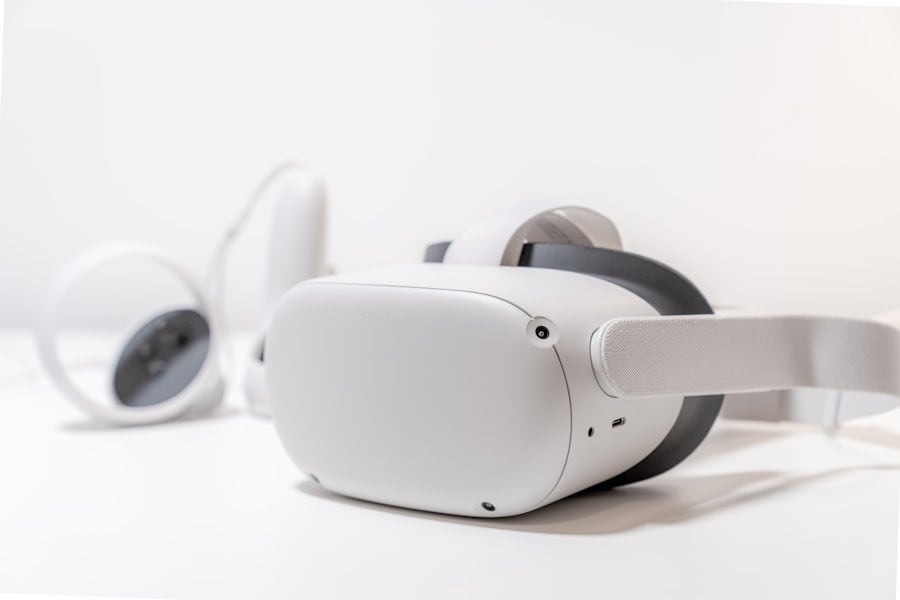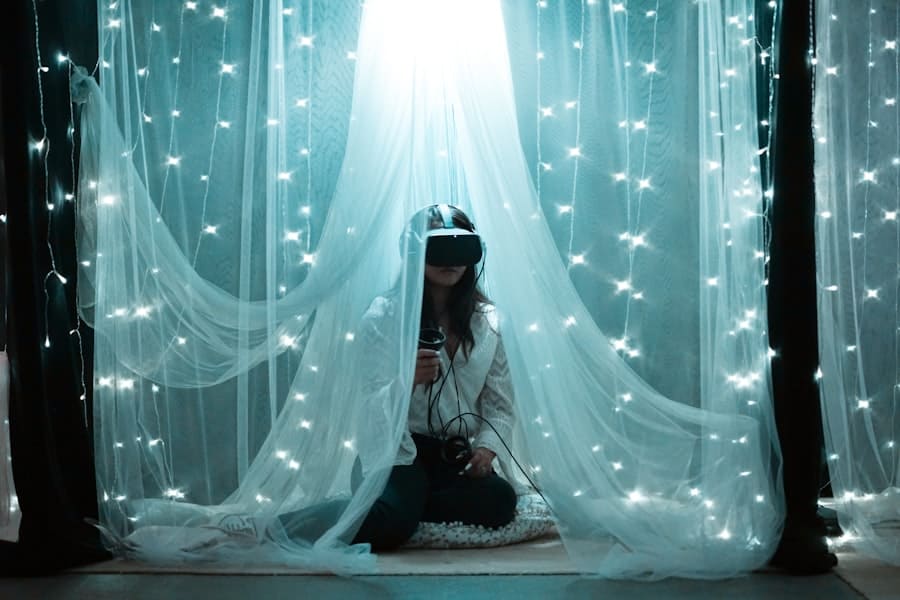In recent years, the landscape of science education has undergone a significant transformation, largely driven by advancements in technology. Virtual labs have emerged as a pivotal tool in this evolution, providing students with the opportunity to engage in practical science experiments without the constraints of a physical laboratory. These digital platforms simulate real-world laboratory environments, allowing learners to conduct experiments, analyze data, and draw conclusions in a virtual setting.
The rise of virtual labs is particularly relevant in an era where accessibility and flexibility in education are paramount, enabling students from diverse backgrounds to participate in hands-on learning experiences that were once limited to well-equipped institutions. The concept of virtual labs is not merely a substitute for traditional laboratory experiences; rather, it represents a paradigm shift in how science is taught and learned.
For instance, students can manipulate variables in a controlled environment, observe outcomes in real-time, and repeat experiments as often as needed without the fear of wasting resources or time. This innovative approach not only democratizes access to quality science education but also prepares students for a future where digital literacy is increasingly important.
Key Takeaways
- Virtual labs provide a practical and interactive learning experience for science education, allowing students to conduct experiments in a virtual environment.
- Advantages of virtual labs include accessibility, cost-effectiveness, and safety, while limitations include the lack of hands-on experience and potential technical issues.
- Current trends in virtual labs for science education include the use of simulations, 3D models, and interactive multimedia to enhance learning experiences.
- Virtual labs play a crucial role in remote learning and distance education, providing students with practical science education opportunities regardless of their location.
- Integrating virtual labs into traditional science classrooms can enhance hands-on learning experiences and provide additional resources for students and teachers.
Advantages and Limitations of Virtual Labs
The advantages of virtual labs are manifold, making them an attractive option for educators and students alike. One of the most significant benefits is the ability to provide a safe and controlled environment for experimentation. In traditional labs, safety concerns can limit the types of experiments that can be conducted, particularly those involving hazardous materials or complex procedures.
Virtual labs eliminate these risks, allowing students to explore a wider range of scientific phenomena without the potential for accidents or injuries. Furthermore, they can accommodate diverse learning styles by offering interactive elements that engage students visually and kinesthetically. Another notable advantage is the flexibility that virtual labs offer.
Students can access these platforms from anywhere with an internet connection, making it easier for those who may not have access to physical laboratories due to geographical or financial constraints. This accessibility is particularly beneficial for remote learners or those enrolled in distance education programs. Additionally, virtual labs often come equipped with built-in assessment tools that allow educators to track student progress and understanding in real-time, facilitating personalized learning experiences.
However, despite their many advantages, virtual labs also come with limitations that must be acknowledged. One primary concern is the lack of tactile experience that physical labs provide. While virtual simulations can replicate many aspects of laboratory work, they cannot fully substitute for the hands-on skills developed through direct interaction with equipment and materials.
This absence may hinder the development of essential laboratory techniques that are crucial for students pursuing careers in scientific fields.
Current Trends in Virtual Labs for Science Education
As technology continues to advance, several trends are shaping the future of virtual labs in science education. One prominent trend is the integration of augmented reality (AR) and virtual reality (VR) into virtual lab experiences. These immersive technologies allow students to engage with scientific concepts in a more interactive and engaging manner.
For example, VR can transport students into a 3D environment where they can explore molecular structures or navigate through complex biological systems, providing a level of engagement that traditional methods cannot match. Another trend is the increasing collaboration between educational institutions and technology companies to develop specialized virtual lab platforms tailored to specific curricula or scientific disciplines. This collaboration often results in more sophisticated simulations that align closely with educational standards and learning objectives.
For instance, partnerships between universities and software developers have led to the creation of virtual labs that focus on advanced topics such as genetic engineering or environmental science, enabling students to conduct experiments that reflect current research trends and methodologies.
The Role of Virtual Labs in Remote Learning and Distance Education
The COVID-19 pandemic accelerated the adoption of remote learning across educational institutions worldwide, highlighting the importance of virtual labs in maintaining continuity in science education. As schools transitioned to online formats, virtual labs became essential tools for educators seeking to provide students with meaningful hands-on experiences despite physical distancing measures. These platforms allowed teachers to design engaging lessons that could be delivered remotely while still fostering inquiry-based learning.
In distance education settings, virtual labs have proven invaluable in bridging the gap between theoretical knowledge and practical application. Students enrolled in online courses can access virtual lab simulations at their convenience, allowing them to experiment with concepts discussed in lectures without the need for physical materials or supervision. This flexibility not only enhances student engagement but also encourages self-directed learning, as students can explore topics at their own pace and revisit experiments as needed.
Integration of Virtual Labs in Traditional Science Classrooms
The integration of virtual labs into traditional science classrooms represents a hybrid approach that combines the strengths of both physical and digital learning environments. Educators are increasingly recognizing the value of incorporating virtual labs into their curricula to complement hands-on experiments conducted in physical laboratories. This blended approach allows teachers to introduce complex concepts through simulations before students engage in actual lab work, thereby enhancing comprehension and retention.
For example, a chemistry teacher might use a virtual lab to demonstrate chemical reactions before students conduct similar experiments using real reagents. This preparatory step not only familiarizes students with the procedures but also helps them understand the underlying principles governing the reactions they will observe firsthand. Additionally, virtual labs can serve as valuable tools for reinforcing concepts after physical experiments have been conducted, allowing students to analyze data and draw conclusions in a controlled environment.
Innovations and Developments in Virtual Lab Technology
The field of virtual lab technology is continually evolving, driven by innovations that enhance user experience and educational outcomes. One significant development is the incorporation of artificial intelligence (AI) into virtual lab platforms. AI can personalize learning experiences by adapting simulations based on individual student performance and preferences.
For instance, if a student struggles with a particular concept, the AI can provide additional resources or modify the simulation to offer targeted practice opportunities. Moreover, advancements in cloud computing have made it possible for virtual labs to support collaborative learning experiences. Students from different locations can work together on experiments in real-time, sharing data and insights as they navigate simulations collectively.
This collaborative aspect not only fosters teamwork skills but also mirrors the collaborative nature of scientific research in professional settings.
Challenges and Opportunities for the Future of Virtual Labs
Despite their potential, virtual labs face several challenges that must be addressed to maximize their effectiveness in science education. One significant challenge is ensuring equitable access to technology among all students. While many educational institutions are investing in digital resources, disparities still exist based on socioeconomic factors.
Addressing these inequities will be crucial for ensuring that all students can benefit from virtual lab experiences. Additionally, there is a need for ongoing professional development for educators to effectively integrate virtual labs into their teaching practices. Many teachers may lack familiarity with these technologies or may not know how to leverage them to enhance student learning fully.
Providing training and resources will empower educators to utilize virtual labs effectively and create engaging learning environments that capitalize on the strengths of both digital and physical laboratories. Conversely, these challenges present opportunities for innovation and growth within the field of virtual labs. As technology continues to advance, there is potential for developing more sophisticated simulations that closely mimic real-world laboratory conditions.
Furthermore, increased collaboration between educators, researchers, and technology developers can lead to the creation of tailored solutions that address specific educational needs and challenges.
The Impact of Virtual Labs on Practical Science Education
The impact of virtual labs on practical science education is profound and multifaceted. By providing accessible and engaging platforms for experimentation, virtual labs have transformed how students learn about scientific concepts and develop critical skills necessary for success in STEM fields. They enable learners to explore complex ideas at their own pace while fostering curiosity and inquiry-based learning.
Moreover, as educational institutions continue to embrace digital transformation, the role of virtual labs will likely expand further. They will not only serve as supplementary tools but may also become integral components of science curricula across various educational levels. As educators harness the power of technology to enhance practical science education, students will be better equipped to navigate an increasingly complex world where scientific literacy is essential for informed decision-making and problem-solving.
In conclusion, while challenges remain in ensuring equitable access and effective integration into curricula, the potential benefits of virtual labs are undeniable. They represent a significant advancement in science education that aligns with contemporary learning needs and prepares students for future scientific endeavors.
In a recent article on The New World of Possibilities with the Samsung Galaxy Chromebook 4, the potential for innovative technology in education is highlighted. Just as virtual labs are revolutionizing practical science education, the Samsung Galaxy Chromebook 4 is opening up new opportunities for students to engage with learning in a digital environment. Both advancements in technology are shaping the future of education and providing students with exciting ways to learn and explore.
FAQs
What are virtual labs for practical science education?
Virtual labs for practical science education are online platforms that simulate real laboratory experiments and allow students to perform various scientific experiments and activities in a virtual environment. These virtual labs aim to provide a hands-on learning experience for students who may not have access to physical laboratory facilities.
How do virtual labs benefit practical science education?
Virtual labs offer several benefits for practical science education, including providing access to laboratory experiences for students who may not have access to physical labs, allowing students to repeat experiments multiple times to reinforce learning, and reducing the cost and time associated with setting up and conducting physical experiments.
What are the challenges of using virtual labs for practical science education?
Some challenges of using virtual labs for practical science education include the lack of physical hands-on experience, the need for reliable internet access and technology, and the potential limitations in simulating complex or nuanced real-world laboratory scenarios.
What is the future of virtual labs for practical science education?
The future of virtual labs for practical science education is likely to involve advancements in technology, such as the use of virtual reality and augmented reality to create more immersive and realistic laboratory simulations. Additionally, there may be increased integration of virtual labs into traditional science curricula to enhance and supplement hands-on learning experiences.



